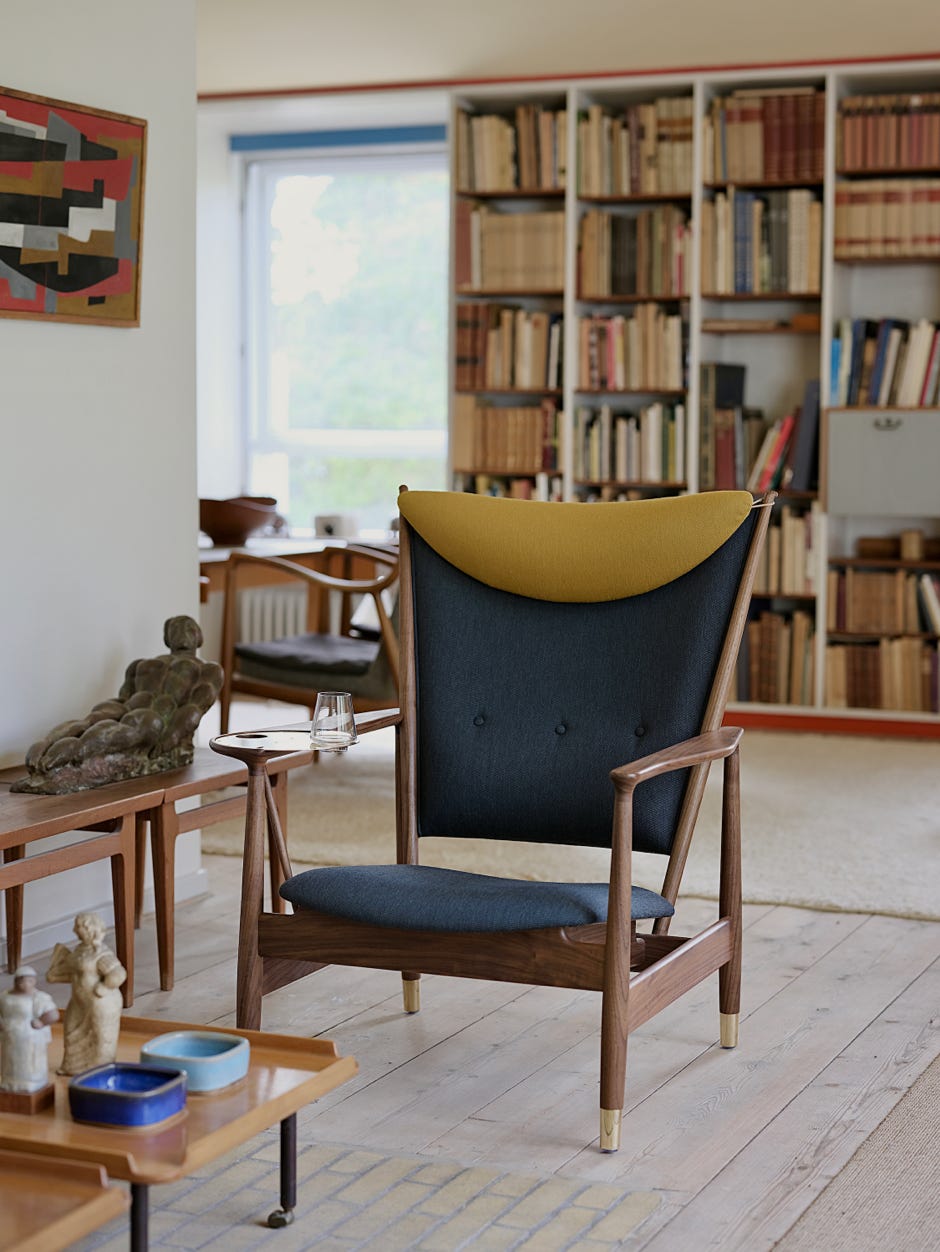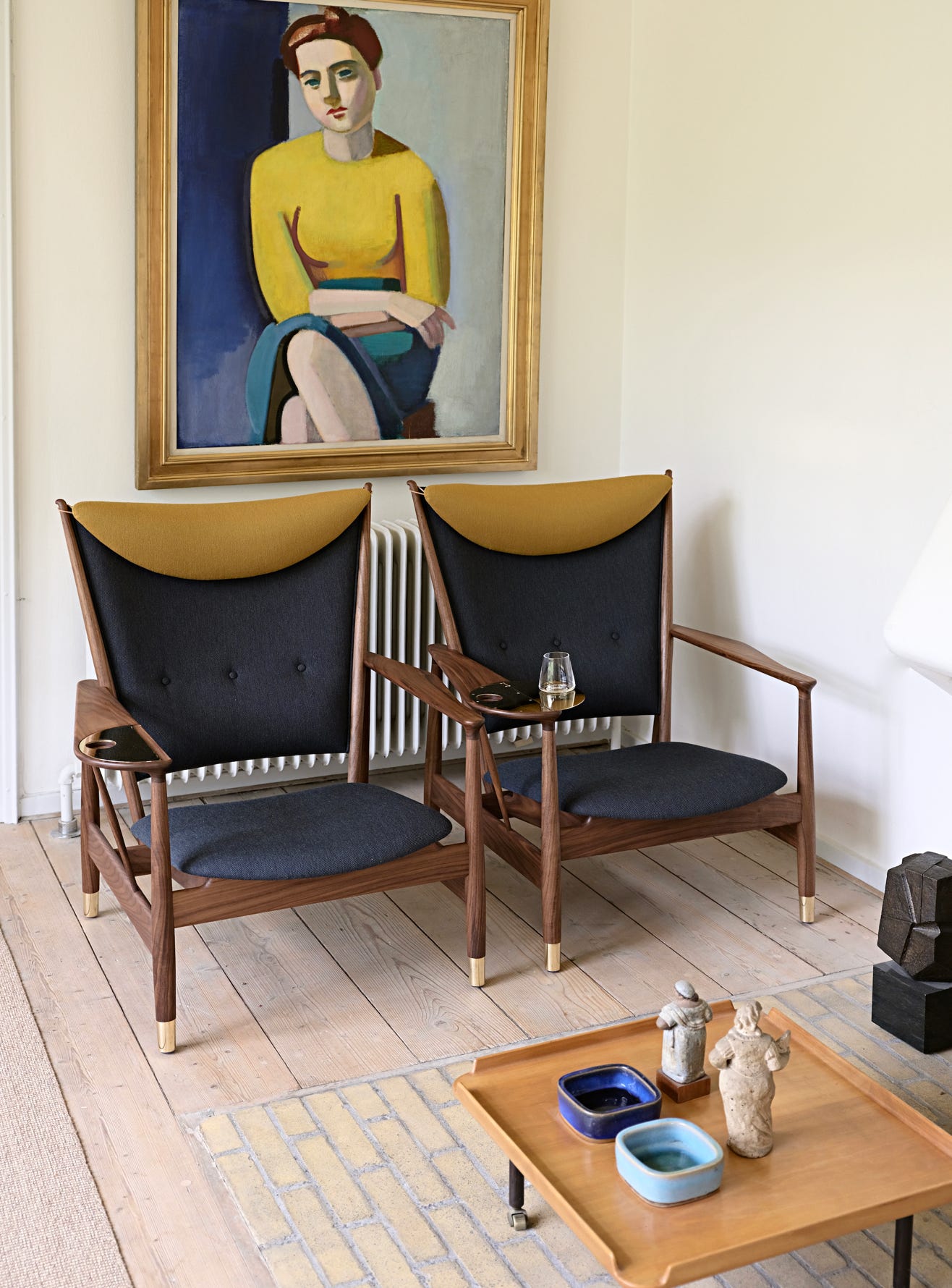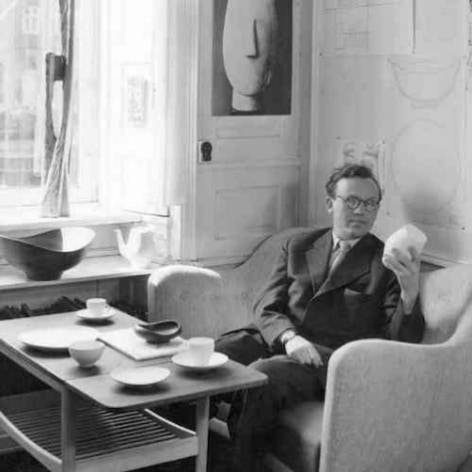15% off with DESIGN15


The Whiskey Chair was featured at the 1948 Cabinetmakers Guild Exhibition, as part of Finn Juhl's concept exhibition "An Art Collector's Living Room", but was never put into production: a free spirit if ever there was one, Finn Juhl was not afraid to stay alone and didn't care much about critics who judged his creations too extravagant.
The Whiskey chair is not only extravagant, it is also playful and provocative – especially in the very politically correct atmosphere of Danish social democracy in the 1940s. The right armrest unfolds organically towards the end, making way for a handmade half-moon shaped brass tray. The tray can unfold into a full circle where a hole in the brass surface is shaped to hold a glass.
Finn Juhl's original watercolor drawing from 1948 shows how two chairs fit together perfectly, as the right and left armrests are asymmetrical. The Whiskey chair is extremely comfortable and invites you to share a privileged moment of immersion and pleasure.
"To us, it is simply extraordinary, that Finn Juhl designed a chair which incorporates a glass of whisky in this manner. In a way, it tells you all you need to know about him. He designed freely, without giving the commercial aspect of his creations much thought. However, his designs were always functionally justified. His pieces were often exclusive and certainly not within everyone's reach. For this reason, the Whisky Chair was never put into production during Finn Juhl's life, but remained merely a comment to the social democratic Denmark in the late 40's, that did not allow for this type of extravagance." (Hans Henrik Sørensen, founder and co-owner of House of Finn Juhl).
Materials walnut, brass & mouth blown glass
Upholstery fabric or leather
Dimensions H95 x L79 x P85 cm – Seat height 35,5 cm


Whiskey Chair
from









Finn Juhl

As a teenager, Finn Juhl (1912-1989) wanted to become an art historian, having a passion for the fine arts since childhood. His father stopped him and Finn Juhl started architectural studies. Later, when his fame as a designer of furniture acquired, he speaks of himself as an autodidact, in reference to this upset vocation that forced him to walk intellectually on a lonely way. His style owes much to this singular trajectory, with its non academic interpretation of art visible in his work. Finn Juhl started his studies in 1930, a key period which saw the birth of modern design and furniture.
His modern offices in central Copenhagen was greeting his visitors with a huge Japanese fish in paper, symbol of imagination. Rather than thinking in terms of practical construction, Finn Juhl had the mind-set of a sculptor, when he shaped a piece of furniture. In the 1940s and 1950s, this way of working had never been seen before. His ambition was to design furniture with movement and life.
Juhl took pride in making both the structurally supportive elements of the furniture and the seated person look as though they are floating. In some of his chairs, the backrest and the seat are almost invisibly joined, as if they were clouds floating through the room.
In creating his furniture, Finn Juhl worked with two elements: The carrying element, and the carried. He eventually became known for his special ability to separate the bearing parts from the borne. This is one of many examples of how he broke free from conventional working methods and found his inspiration in art.
Ce site web utilise les cookies techniques pour fonctionner.
Vous pouvez les refuser, mais perdrez alors la possibilité d'acheter.
OK
Refuser